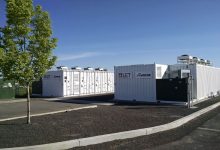Regulated Electricity Price: Obstacle or Necessity?
Regulated electricity prices were considered by the European Union (EU) an obstacle in the path to perfection as social, political, and economic entity. Instead, the ‘market’ price is the one that should dictate the operation of the system. But, especially for Eastern countries, market price actually means only higher bills, which must be paid from much lower salaries than those from the West.
A few years ago, on the occasion of announcing infringement proceedings against Romania, due to slowness in eliminating regulated energy prices, the European Commission (EC) stated that “setting prices for end-consumers through state intervention raises obstacles for new market entrants and therefore deprives consumers and companies of their right to choose the best service on the market.”
In the meantime, after much insistence and threats with infringement, regulated electricity prices started to disappear in Romania, as the EC had requested for many years, but new energy producers emerged and the old ones are increasingly close to the moment of being closed, as they fail to comply with the increasingly severe pollution rules imposed by Brussels and because the green energy mantra is spoken louder and louder, more and more often, by more and more voices.
Furthermore, all strategic investors in Romania’s energy distribution are considering selling their assets and leave, precisely when there are less than two months until the full liberalization of electricity prices, after for years they insisted that it was vital. From January 1, 2021, the 6 million Romanians who currently pay for electricity prices regulated by the state will enter the free market. This means that the regulated price will disappear.
From a net electricity exporter, Romania has managed to import constantly in the last year and a half. That is because it has not invested almost anything for at least 20 years. The prominent investment in the gas-fired power plant in Iernut, of Romgaz, which would be the first state investment in a new energy production unit in the last 13 years (after reactor 2 in Cernavoda, commissioned in 2007), has suffered repeated delays.
No matter how much the Romanian state has tried to postpone market liberalization, it still took place, even though it was made gradually. But what Brussels promised at the time that was to take place did not happen. Namely, not only the elimination of this restriction failed to bring new players on the Romanian electricity market, but it even determined others to leave or, anyway, want to leave. And prices continued to climb, dictated not by the state, but by the free market.
For example, Italy’s Enel group had announced since 2015 that it wanted to sell everything, but dropped the idea until 2019, when it reiterated its intention. For now, without an outcome or at least not one known to the public. The same is the case of Germany’s E.ON or Czech Republic’s CEZ. Basically, these three companies are the winners of the 5 energy distribution companies sold by Romania in 2004.
CEZ was however faster and in November 2020 sold all its operations in Romania for EUR 1.1bn, to the Australian investment fund Macquarie. In 2005, CEZ purchased the distribution network in Oltenia for EUR 151mln. Of course, the company made investments in its operations (only the wind farms in Dobrogea cost as much as the Australian company paid for all CEZ assets in Romania). The Romanian state, which has publicly stated that it wanted to purchase CEZ’s assets, came up with the lowest bid.
As far as investments are concerned, over time, some have been called into question. For example, the Court of Accounts has discovered at one point that in the first 10 years from the moment of privatization of the first electricity distribution subsidiary, the electricity bill increased by over 70%.
Or, another example, in mid-November 2020, Alba Police accused Delgaz Grid, from the German group E.ON, of possible criminal offenses, by the fact it has allegedly falsified some figures, so that the reported losses were higher, and this would have led to the establishment of erroneous gas distribution tariffs. Such accusations will be proven in court or withdrawn, as it has happened on different occasions. A key role in clarifying such situations could have the National Regulatory Authority for Energy (ANRE), which also has the role of approving the investments and tariffs for energy and gas distribution requested by electricity and gas distribution operators.
A common history, a separate future?
The energy landscape is similar in countries in the region, i.e., Ukraine, Moldova, Bulgaria, Hungary, and Serbia. A reliance on coal, nuclear power, wind turbines, solar panels, and hydropower plants, in different percentages. Bulgaria and Hungary, the two neighbours of Romania that are also EU members, also align themselves with European directives and rules imposed by Brussels. Energy prices are more or less similar, especially that there is a relative integration of spot electricity markets.
More interesting is what happens with the other neighbours of Romania, which are not part of the great European family. In the last part of 2019, the discrepancies between energy prices in the countries that make up the EU are huge. For example, the electricity price for household consumers in Denmark (EUR 0.2924 per kWh) was three times higher than the one in Bulgaria (EUR 0.0958 per kWh). Probably in Brussels’ view Bulgaria needs to close this gap. As Romania, Bulgaria also has a draft energy strategy providing that by 2030, with an outlook to 2050, the country south to the Danube will install over 2600 MW in new power plants, especially photovoltaic, and also keep the coal-fired power plants, despite high operating costs.
Compared to Romania, Bulgaria covers 39% of its electricity needs from lignite power plants, a percentage that has decreased significantly in the last 10 years, from almost half. At the same time, in 2030, Bulgaria would put the Belene nuclear power plant into operation. Once the new green energy capacities are put into operation, Bulgaria would reach a renewable energy consumption of 27%.
Hungary, Romania’s westernmost neighbour, has an energy production capacity of 8,500 MW and provides half of its needs through the Paks nuclear power plant. In general, Hungary imports energy from Slovakia, Austria, and Ukraine. One of Hungary’s problems is the lack of natural resources. In addition to lignite, used in some thermal power plants that do not exceed 10% of the needs of the neighbouring country, Hungary provides 20-25% of its gas needs, but must import the rest. Although with a population twice as small as that of Romania, the annual gas consumption of Hungary is similar to that of Romania, about 10 billion cubic meters per year. This is also because in Hungary almost the entire population is connected to the gas distribution network, unlike Romania, which has only a third of the population in this situation. The Hungarian president promised, at the end of 2019, that Hungary would completely give up coal by 2030 and that it would increase the installed capacity of photovoltaic parks tenfold, which would allow the use of only electric vehicles.
Having a high reliance on imports, producing only 12% of its electricity needs, the Republic of Moldova also has an energy intensity over three times higher than the European average. The Republic of Moldova has few import possibilities, but in the first part of this year the regulator in Chisinau announced tariff reductions by up to 13%, depending on the type of consumer, as a result of a decrease in electricity prices. However, the country is captive to Russia in ensuring its natural gas needs. Although Romania has built a gas pipeline to the border through which, if we were to believe the statements of politicians, it would bring Romanian gas to Moldova, the country continues to import 100% of its gas needs from Russia.
Romania imagined that it would export Black Sea gas, but the exploitation has not started yet, because the Romanian politicians managed to block the intentions for extraction from the Black Sea blocks. In the meantime, ExxonMobil and Lukoil have already announced their intention to exit the blocks operated by them.
Returning to the Republic of Moldova, the main energy production unit, the Cuciurgan Thermal Power Plant, with a capacity of 2,500 MW, is located in the territory disputed with Trans-Dniester and is owned by the Russian concern RAO EAS. The own capacities of the Republic of Moldova are small: Termoelectrica Chisinau (304 MW) covers 15% of consumption, together with CET Nord in Bălți (37.7 MW). The total installed capacity of local producers is 427 MW, for a maximum consumption of 1000 MW. A country almost totally dependent on imports could hardly be considered for possible energy aid.
Like the other Balkan states, Serbia is heavily dependent on coal-fired energy. No less than 70% of the annual electricity demand comes from thermal power plants and the rest is mostly covered by hydropower plants and small groups of renewable energy. Aspiring to become a member of the EU, Serbia has a major handicap in that it insists on building new coal-fired power plants and some, fewer, gas-fired power plants, but also because it keeps electricity prices low (from Brussels’ perspective). Serbia has announced plans for at least 6 new coal-fired power plant projects, with a total installed capacity of more than 2,500 MW, although by 2025 it is likely to be able to commission a single plant, of 350 MW. As in Romania, the enthusiasm of investments at any cost in green energy – in this case, in small hydro-power stations less than 10 MW – has been replaced by the concern that the energy input of these units is insignificant in relation to the risks and damage to the environment. In fact, in 2018, only 0.8% of Serbia’s energy consumption came from small hydro-power stations.
In comparison, until 2012, Hidroelectrica sold several dozen small hydro-power stations, in an effort to raise funds needed for economic recovery, after the disaster caused by the scandal with the wise guys, which twice put the state company into insolvency. In those years, Romania granted small hydro-power stations 6 green certificates for 1 MWh of energy produced and delivered. The invitation to destroy natural areas and mountain rivers could not be more explicit. Things are the same in Serbia.
Of all the neighbouring countries, Ukraine has by far the most complicated situation, from all points of view, and electricity is no exception. The quality of distribution and supply services is extremely poor, even if we consider only the annual duration of interruption of energy supply to consumers, which amounts to 683 minutes, i.e., 11.4 hours. This was also the case in Romania, in 2009, two years after joining the EU, when unplanned power outages lasted more than 10 and a half hours in the country. In Oltenia, a region still supplied with energy by CEZ, even in 2013 (i.e., 8 years after privatization), the duration of unplanned outages was over 10 hours (607 minutes).
In Ukraine, prices paid by household energy consumers have not changed since the spring of 2017. Populist or not, Ukrainian politicians admit that investment is needed in the national energy system but bring to the fore the need to protect the population from price increases. Ukraine is a mirror image of Romania not many years ago. The prices paid by industrial consumers in Ukraine are enormous, in April reaching EUR 51.01 per MWh, compared to EUR 25.69 in Romania, EUR 30.23 in Poland or EUR 25.78 in Hungary.
At the height of the Covid-19 pandemic, Scandinavian countries used the money provided by their governments to reduce prices, having tariffs of EUR 4.58 per MWh. In early November, the National Commission for State Regulation of Energy and Public Utilities (NCSREPU) increased the tariffs of the energy transmission operator Ukrenergo by almost a third, but this increase is insufficient to cover the losses accumulated by Ukrenergo. Where do these losses come from, which in mid-October amounted to USD 1bn? From the fact that Ukrenergo pays energy producers feed-in tariffs. Another tariff increase would be considered in 2021, which will lead to further increases in the price of electricity to end-consumers.
Romania has had, for several years, the most generous green energy support scheme in the entire EU. It would not hurt for Ukrainians not to repeat the same mistake.







